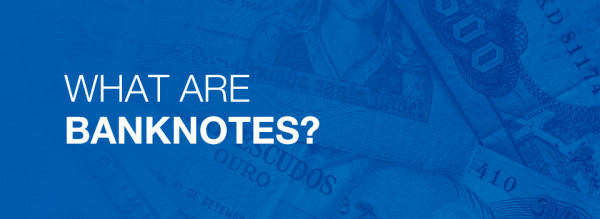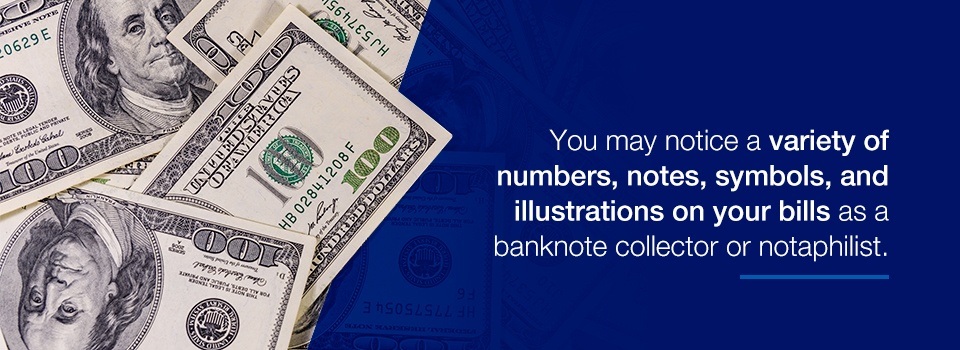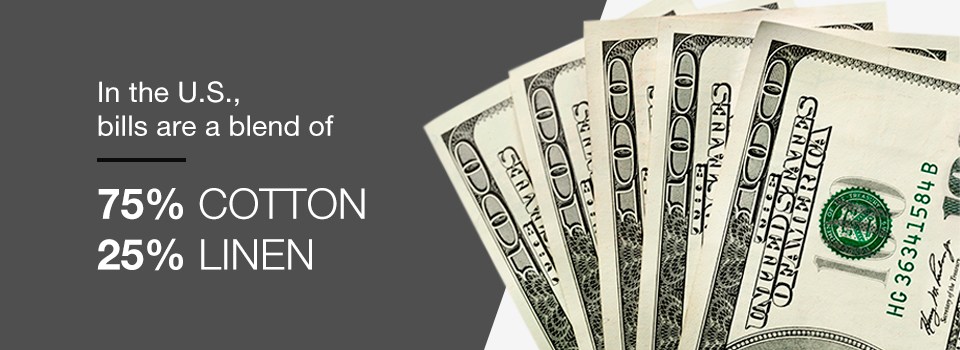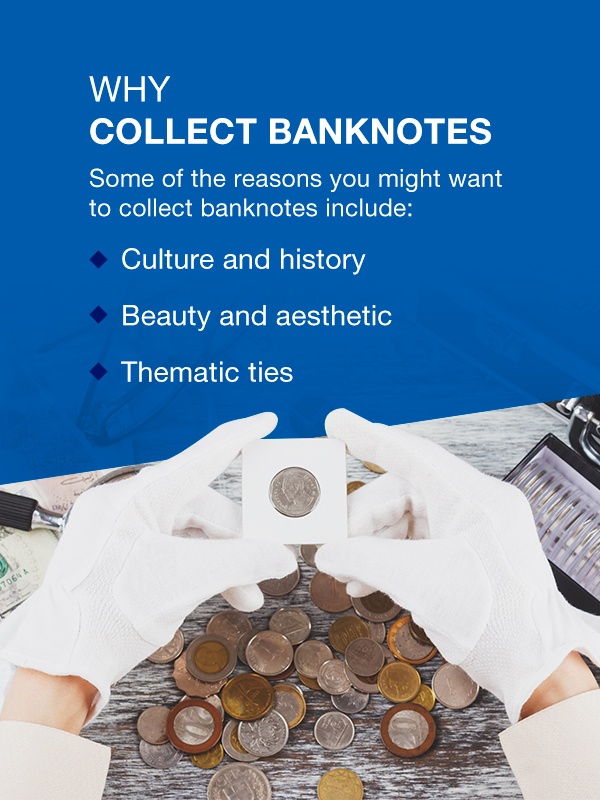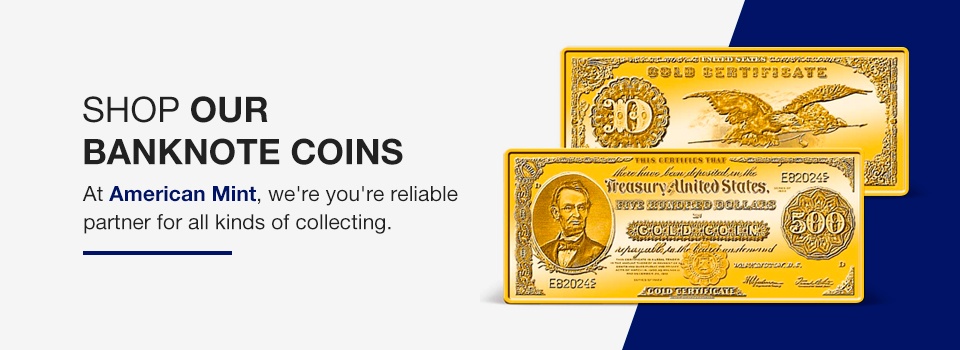What Is a Banknote?
The term "banknote" generally refers to paper money, bills, or currency. They are often issued by banks, although not always. In the U.S., the Federal Reserve is currently the only body that can legally issue banknotes, but in the past, private banks could issue them as well. The original definition of banknotes meant they were "promissory notes." Banknotes were issued by a banker and were payable on demand or at a fixed date decided by the recipient. They were often handwritten and served as a kind of form. Some countries still issue banknotes via private banks.
Before the U.S. began to transition away from the Gold Standard, a U.S. citizen could exchange banknotes for gold or silver. Today, we define banknotes as a "fiat currency," meaning they are valued by supply and demand rather than a physical reserve of precious metal. Today, banknotes are simply paper bills of fixed denominations that circulate as regular currency — their value changes with inflation.
Features of a Banknote
You may notice a variety of numbers, notes, symbols, and illustrations on your bills as a banknote collector or notaphilist. Banknotes have both a front and a back, called the obverse and the reverse. Both sides contain valuable information for issuers and payees. Some older notes were printed on only one side, meaning the back of the banknote was left blank.
Understanding what all the details on your banknotes mean can enhance your enjoyment of and interest in your bills:
- Declaration of legal tender: Upon being issued, a banknote becomes a legitimate means of repaying all debts, both public and private.
- Issuing authority: Official banknotes include the name of the bank issuing the bill. In most modern currency, it will be the central bank of the country, for example, the Federal Reserve.
- Denomination: The denomination, or how much the bill is worth, will be printed on the note. It's almost always numeric, and may also be printed in written text.
- Promise to pay: Older banknotes, which were backed by gold and silver coins, have a statement on the issuer's promise to pay the note's full value on demand. Today's modern banknotes don't include this notice.
- Date of issue: Some banknotes, especially old ones, will include a date of issue. It may be a year, or as specific as the day and month. You may also be able to find the date within the serial number. Many current bills don't include an issue date.
- Serial number: Historically, banks used the serial number to match banknotes with the ledger where they recorded the issue. Today, unique serial numbers appear on all currency that allows the issuing government to track how many bills are printed. In the U.S., the serial number is a series of 11 numbers and letters.
- Signatures: Most banknotes throughout history have carried at least one signature. It is most often the head of the bank that issued the note. Some historical banknotes may be signed by one of the issuing bank's employees. In some countries, you can find the signature of the country's president or leader on the currency.
- Illustrations: One reason you might choose to collect banknotes is the beautiful linework found on most of them. These often give us windows into the culture and history of the country that issued the note.
- Security features: While older banknotes had relatively few security features, today's bills have many mechanisms to prevent counterfeiting. Special inks can add a magnetic field or fluorescence, while intricate patterns make photocopying impossible. The paper can be embossed, watermarked, or woven with colored fibers or security threads. Governments are always adding new features to currency to prevent counterfeits.
History of Banknotes
How Are Banknotes Made?
While we often refer to banknotes as "paper money," they are not always paper. A more accurate banknote definition would describe them as "printed money." Some are made from cotton or linen. In the U.S., bills are a blend of 75% cotton and 25% linen. The material is more durable than regular paper. The Bank of England is famous for replacing their paper currency with polymer notes. According to the Bank of England, these polymer notes last two-and-a-half times longer and have a 16% lower carbon footprint than paper money.
Understanding the materials your bills are made of can help you determine how to care for and preserve them. Learning more about the intricate printing process can deepen your fascination with your collection.
The steps to design, print, and protect currency can vary slightly from country to country. The process falls into four phases:
- Design: Banknote designers first develop the artwork, graphic layout, and a plan for security features.
- Plate making: Once the design is finalized, an engraver makes plates for the printing process. It's an intricate process that may involve color separation, meaning a different plate will be used for each color to be imprinted on the notes. Once the mother plates are finalized, they will be used to make hundreds of identical printing plates.
- Printing: Ink is applied to these printing plates so that it fills all the engraved grooves. A special paper or polymer is selected and sent through the printing press, which will first print background designs and then the more delicate lines. Some of these lines are printed so that you can feel them if you run your fingers over them.
- Finishing: Finally, the notes will be coated in a varnish that gives them a sheen that is coveted by many collectors. They are thoroughly inspected for mistakes before being bundled and sent off. In the case of U.S. currency, the Bureau of Engraving and Printing (BEP) sends the bills to the Federal Reserve.
What Is a Banknote Coin?
A banknote coin is a commemorative coin that is popular among both banknote and coin collectors. They are often minted in honor of a specific banknote. You can find banknote coins commemorating the issuance of now-rare gold banknote certificates, and others depicting the Declaration of Independence. You can even own a piece of modern history when you buy a banknote coin featuring today's currency, such as the 2013-redesigned $100 bill.
Banknote coins are usually either silver-plated or gold-layered with a color tableau of the banknote. The engraving features portraits of U.S. presidents or historic events, symbols, or monuments.
Why Collect Banknotes
Anyone from history buffs and art enthusiasts to world travelers can find intrigue and joy in collecting banknotes. You can focus on modern international currency or notes from throughout history. Many collectors enjoy collecting printed bills because they hold personal and historical significance and take up little space. Thanks to each bill's unique serial number, every item in a banknote collection is one-of-a-kind.
Some of the other reasons you might want to collect banknotes include:
- Culture and history: The images on a banknote often represent the things that are culturally significant to that country. On currency from around the world, you can find flora and fauna, famous people, monuments, buildings, and ancient ruins. You can also see depictions of famous battles and historic events. Some banknotes were controversial when issued, or they went into circulation during a notable historical moment. With so many stories behind every note, collecting banknotes lets you own a piece of living history.
- Beauty and aesthetic: Bills are works of art in their own right. Illustrators and engravers masterfully render portraits, events, animals, and locations on banknotes. On modern currencies, the intricate linework and specialty inks, watermarks, or color-changing elements make any bill a marvel.
- Thematic ties: You might choose to base your banknote collection around a particular theme. Some collectors look for bills that have birds or bridges on them. Others collect money from specific countries or those with military significance. You might seek to complete a collection of the bills in every denomination issued from a year with personal importance. There are so many possibilities to link your banknote collection to your interests.
How to Collect Banknotes and Currency Notes
Many notaphilists begin their collections with a particular goal in mind. Others pick up a few banknotes first and eventually decide on a theme to guide future collecting.
There are many types of banknote collections you can choose from, such as:
- Type sets: Sets that include one example of a banknote in every issued design. For example, you might have a type set of every design of the $5 bill in U.S. currency.
- Thematic sets: Sets that are usually focused on the banknotes' illustrations and built around a particular subject. You can assemble a thematic set of bills depicting trains, battles, ships, or animals.
- Seal type sets: Sets featuring one example of every unique seal ever used by the United States.
- Location sets: Sets of notes from a particular city or country. These sets could be every denomination from a specific country or bills printed in a particular town.
- Serial number sets: Sets featuring specific serial numbers, as decided upon by the collector. Since every banknote has a unique serial number, it can be exciting to find notes with unusual serial numbers. Many collectors look for notes with solid serial numbers, meaning every digit is the same. You can also find serial numbers in ascending or descending order or ones that alternate between two numerals.
The simplest way to begin collecting banknotes is to save the ones you find in circulation. If you are a beginner, you might attempt to find a complete set of $1 bills from every combination of Federal Reserve District and Bureau of Engraving and Printing (BEP) locations. There are 12 Federal Reserve Districts that issue U.S. bills and two BEP printing facilities — one in Washington, D.C. and one in Fort Worth, Texas. That means a complete collection would include 24 $1 bills.
Another way to collect is to keep notes as souvenirs from countries you've visited. Or, maybe your goal is to obtain one bill from every country in the world. Since visiting every country yourself is not always possible, you might instead rely on banknote dealers, auctions, or collector fairs to complete your set.
Shop Our Banknote Coins
At American Mint, we're you're reliable partner for all kinds of collecting. We specialize in high quality and privately-minted coins and offer a brilliant selection of banknote coins. Among our collection, you'll find an array of gold-layered and silver-plated commemorative banknote coins. We also offer both gold and silver banknote certificate ingots, reproduced from the rare and valuable original certificates. These fascinating pieces of monetary art are perfect for rounding out any coin or banknote collection.
Own your very own piece of U.S. Treasury and Federal Reserve History with American Mint's banknote coins and replica banknote certificates. Call us toll-free at 1-877-807-MINT to learn more about the items in our banknote collection.
Sources:
- https://www.uscurrency.gov/denominations/bank-note-identifiers
- https://www.uscurrency.gov/history
- https://www.americanmint.com/us-currency-american-currencies
- https://www.americanmint.com/us-currencies/banknote-coins
- https://www.americanmint.com/1875-100-declaration-of-independence-commemorative-color-coin-us-9170523
- https://www.americanmint.com/100-benjamin-franklin-banknote-commemorative-coin-us-9184464
- https://www.americanmint.com/coins-and-commemoratives/wildlife
- https://www.americanmint.com/coins-and-commemoratives/military
- https://www.americanmint.com/coins-and-commemoratives/foreign-coins
- https://www.theibns.org/grading/
- https://www.americanmint.com/us-currencies/legal-tender/uncirculated
- https://www.americanmint.com/coins-and-commemoratives
- https://www.theibns.org/joomla/index.php?option=com_content&view=article&id=251&limitstart=2
- https://www.theibns.org/joomla/index.php?option=com_content&view=article&id=251&limitstart=3
- https://www.moneyfactory.gov/hmimpaperandink.html
- https://www.bankofengland.co.uk/knowledgebank/why-are-new-banknotes-made-of-polymer
- https://www.theibns.org/intro-to-banknotes/Introduction-To-Banknotes-And-Banknote-Collecting.pdf
- https://www.pmgnotes.com/about/paper-money-collecting/
- https://www.investopedia.com/terms/b/banknote.asp
- https://www.moneyfactory.gov/uscurrency/howmoneyismade.html
- https://www.banknoteworld.com/blog/how-banknotes-are-made/
- https://www.pmgnotes.com/paper-money-grading/grading-scale/
- https://www.pcgs.com/grades
- https://www.federalreserve.gov/aboutthefed/federal-reserve-system.htm
- https://www.moneyfactory.gov/contactus.html




